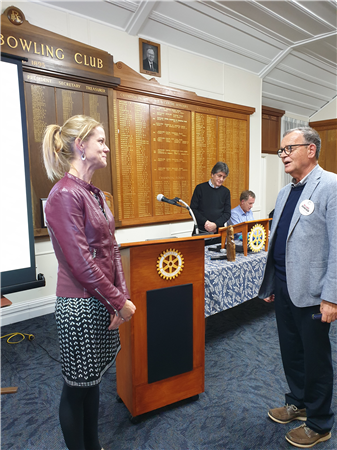Ludmila Adam - The Alpine Fault
Ludlima is the Senior Environment Lecturer in the Faculty of Science at The University of Auckland. She is primarily engaged in geophysics, rock physics, seismic methods, geophysical well logging and fluid interactions.
Ludlima's current research programme at the PORO (Physics of Rocks) lab, aims to answer long-standing questions regarding rock and fluid processes that drive volcano seismicity, identifying from seismic data fractured geological units in geothermal reservoirs, how rocks respond to the injection of carbon dioxide and what drives rock strength in the Alpine Fault. Most of the work is experimental geophysics, supported with numerical models and borehole data.
Understanding past earthquakes is the KEY to predicting how a fault will possible behave in the future.
The Alpine Fault has created the Alps. The fault is 600km in length. It last ruptured in 1717 and ruptures approx. every 300 years. There is a 30% chance that the Alpine Fault will rupture sometime n the next 50 years. We know this because of the study of seismic waves travelling the earth and scientific drilling projects.
Ludlima also works in Schools through a programme called "Ru", which is named after the Maori God of Earthquakes and Volcanoes. Ru uses a cheap, robust and easy-to-build seismometer - called the TC1, to measure seismic displacements in the vertical direction. Assembling and running the system naturally introduces students to a number of concepts in physics and engineering, which triggers discussion about the dynamics and internal structure of the Earth. The Ru network includes High Schools, Middle Schools and Primary Schools. There are 45 Schools in the network at present.
The presentation by Ludlima was extremely interesting and inspired many questions from members. Ludlima was thanked by Michael Bernecker.
